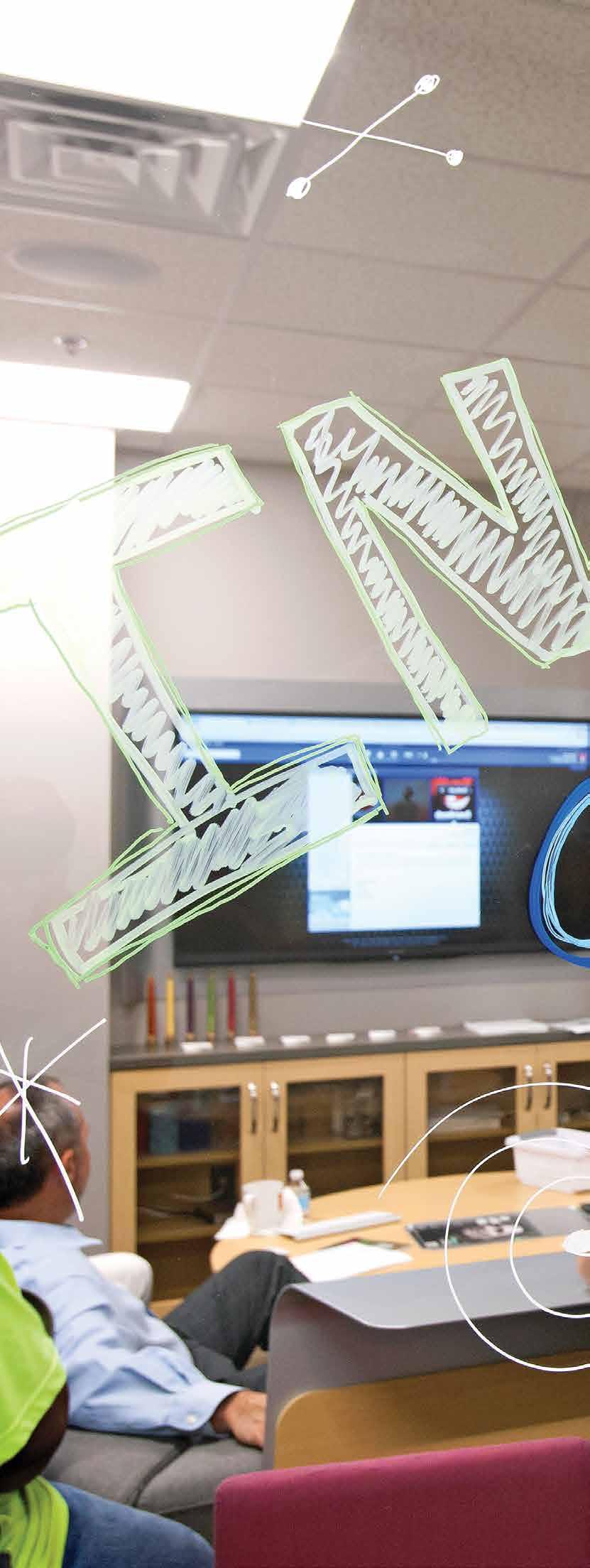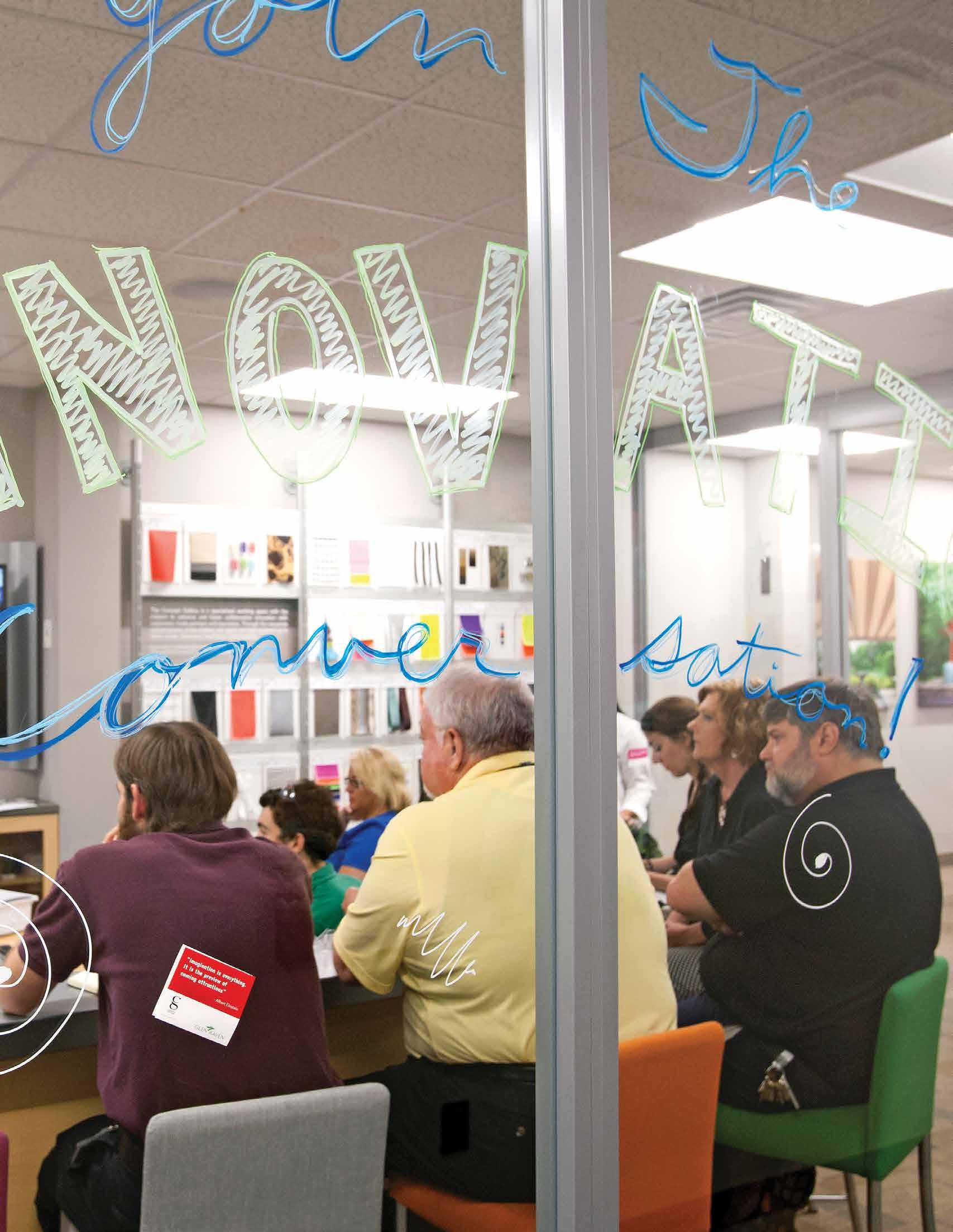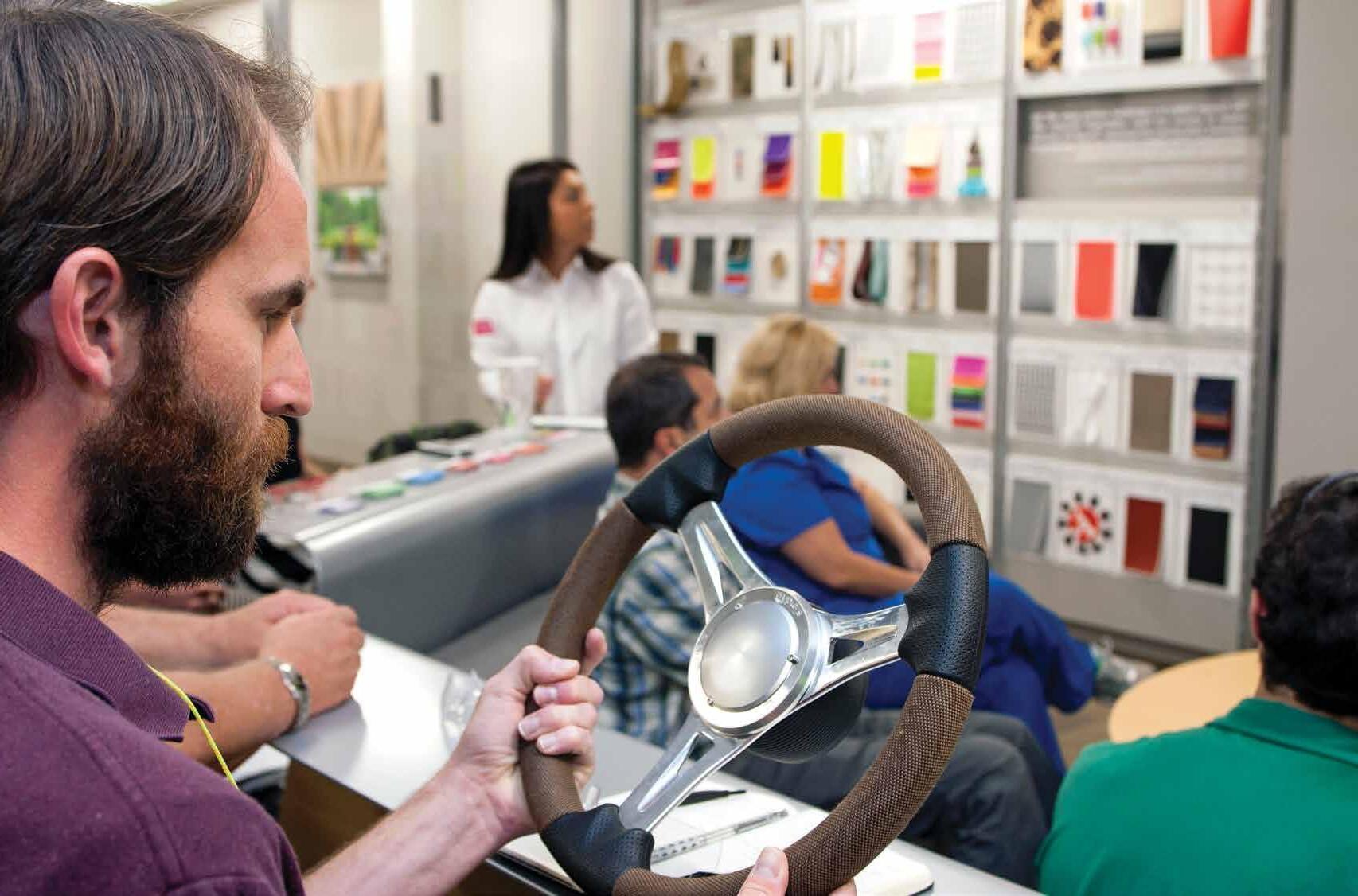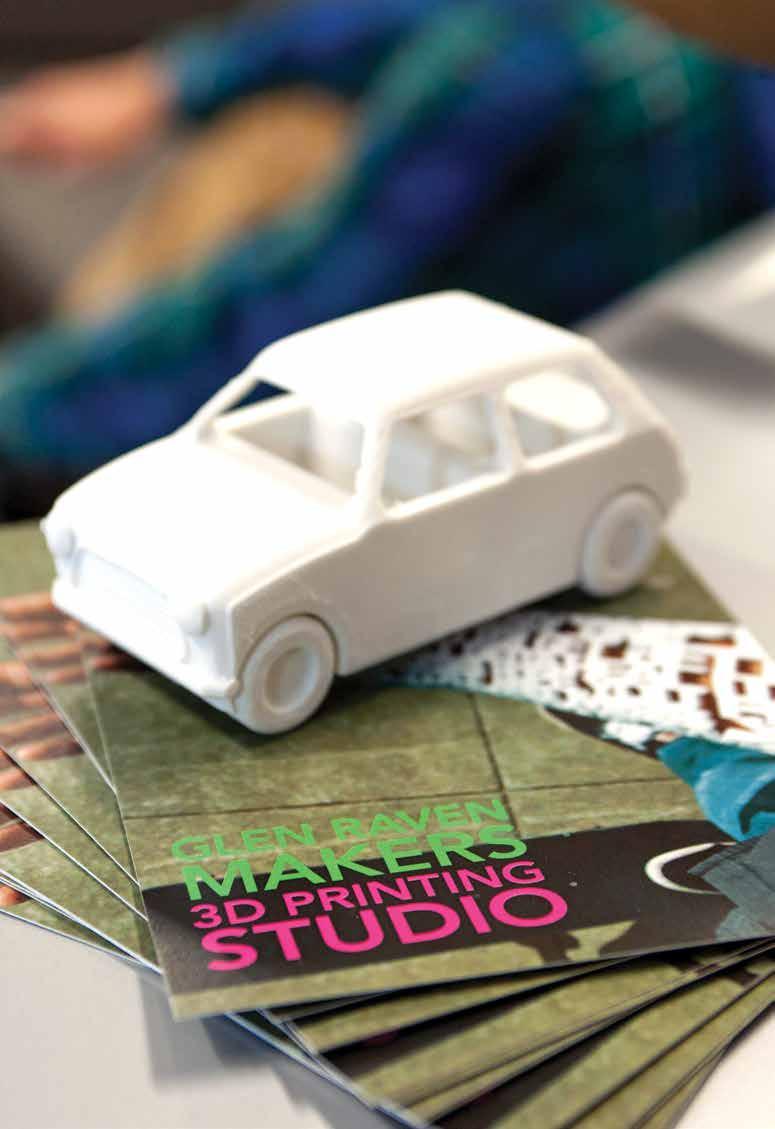
6 minute read
EVERYTHING YOU KNOW’ AND ‘GET IT DONE’
from Raven Issue No. 25
Sami Hayek is a designer whose projects range from mass merchant product design for Target to collaborative work with artisans in Oaxaca, Mexico. He sat down with us to discuss a few ways to use innovative thinking to solve everyday business problems. His key piece of advice: “Destroy everything you know and start with the intention” before tackling problems.
HOW CAN BUSINESSES KEEP INNOVATION AT THE FOREFRONT?
Advertisement
First, it is important to understand innovation from its very meaning: to make new, to make known the unknown, to actually create. When you understand the meaning of innovation while also understanding the project, its variables and its needs, then it’s very easy to innovate.
However, if you come from a place of wanting recognition or attention through the innovation, then your focus is divided. You have two tasks now: one is the recognition or the desire to create a masterpiece, and the other one is to actually do your job. It’s very difficult to do something innovative if your thoughts are divided.
WHAT IS ONE STRATEGY THAT BUSINESSES CAN BORROW FROM YOUR DESIGN PROCESS TO HELP THEM FIND INNOVATIVE SOLUTIONS TO EVERYDAY PROBLEMS?
Erase everything in your imagery library of the past and focus on the task completely. One exercise that I like to do is to remove the titles of the things I am creating. In other words, if you ask me to design a chair, the first thing I do is take out the word chair. By saying chair, I automatically go to the library in my brain that finds whatever I associate with chair. Right off the bat, I have cut my creative process in half and there’s no more freedom.
Instead I ask, “What does a chair do? And what does a chair need to do for the specific project?” It could be an object where you rest or where you sit, a place where you have a conversation, where you eat food, where you watch something on TV or gaze at the stars. First, describe what the object needs to provide. If you start from there, I believe innovation will happen freely.
HOW CAN BUSINESSES KEEP INNOVATING PAST THE FIRST (OR 100TH) GREAT IDEA?
I propose an open scenario where businesses and innovators don’t treasure their ideas so highly. The minute you arrive at a great idea and you feel security in it, all of your resources go into protecting the idea and it becomes impossible to keep innovating. Once you let go of the idea, you are forced to keep innovating.
Four Ways To Inspire Innovative Thinking

ASK WHAT IS THE PURPOSE OF THE OBJECT/IDEA YOU ARE CREATING. First, remove the title of what you are creating to free your mind from past assumptions. Then, design around what the object/idea needs to do.
COLLABORATIONS ARE KEY. Collaborations with different people can help you tap into new creative ideas within your own mind.
SHARE YOUR IDEAS; DON’T GUARD THEM. As soon as you arrive at a great idea, share it with the world so you can keep innovating.
FOCUS ON THE TASK AT HAND AND GET IT DONE. Don’t complain and don’t make excuses. Just. Get. It. Done.
How To Choose The Most Innovative Materials For Your Project
According to Dr. Andrew Dent of Materials ConneXion, a global materials consultancy with the world’s largest library of advanced, innovative and sustainable materials and processes, the beginning stages of a project are the most important for innovation.
“Rather than thinking about the product first, think about the performance that you want that product to have, and then find a material that meets the challenge.”
HOW DOES MATERIAL SELECTION AFFECT INNOVATION?

Your materials selection in any innovation process needs to happen right at the beginning. It’s a mistake to design a product first and then decide what material to choose. Rather, you need to be thinking about what material might be suitable for that application before you even think about what it’s going to look like. To do that, it’s good to work with the material manufacturer in order to understand what limitations exist.
For example, with fabric, you need to understand whether that material can do what you want it to do—can it be stretched or formed, can it be easily printed? Once you understand the limitations and attributes of that fabric, you can start designing around the material. And that’s when you get true innovation through material selection.
WHAT IS MATERIALS SUBSTITUTION AND HOW DO COMPANIES USE IT TO CREATE INNOVATIVE NEW PRODUCTS?
Typically, materials substitution is done for reasons of cost, performance and weight; companies are constantly looking for ways to make products lighter. Usually, a company would move from a metal to a plastic—the automotive industry has been doing this for years—but companies can also substitute materials that are produced using a different process.
For example, because the automotive industry has been moving from heavy steel to lighter plastic, the steel industry realized it needed to counteract this trend. So they developed a full range of new steels that, when produced in the right way, reduce the weight even further. Therefore, innovation can come from substituting material A for material B, or by taking material A and rethinking it and reprocessing it to achieve the specific improvements that are needed.
HOW CAN BUSINESSES USE INNOVATIONS FROM OTHER INDUSTRIES TO PROPEL NEW PRODUCTS WITHIN THEIR CURRENT INDUSTRY?
There is a lot of innovation out there in other industries that is often overlooked. Businesses can solve a lot of performance problems by borrowing innovation that has already been researched and developed by other industries and applying it to their specific industry or product.
For example, we were challenged to find materials for a new fabric cover for an iPad accessory that also had a keyboard. We ended up taking three different materials solutions from other industries: one was from backpacks, the second was from the inside lining of outdoor jackets and the third was actually a 3D-printing process used for sneakers. Instead of reinventing the wheel and rethinking every aspect of the new iPad accessory, we were simply able to use developed materials and processes and apply them to the specific product.
‘NEW GENERATION MANUFACTURING:’ 3D PRINTING, KNITTING AND WEAVING

Though 3D printing has been around since the 1980s, it has recently experienced renewed interest due to the release of affordable 3D printers designed to appeal to a wide audience, from makers and small businesses to startups and traditional manufacturers. 3D printing even made an appearance at New York Fashion Week during Season 12 of the popular show “Project Runway,” which highlighted finalist Justin LeBlanc using 3D printing to design accessories for his final collection.
3D printing, along with 3D knitting and 3D weaving, are all classified as “new generation manufacturing.” All of these processes allow the manufacturer to create a 3-dimensional object from a two-dimensional print. Nike, for example, uses a new knitting machine to knit the entire top part of the shoe in three dimensions, as well as knit in strengthening fibers, different colors and patterns and even the holes for the shoe laces.

Glen Raven has invested in a CubePro desktop 3D printer that is being used as a learning tool to design and print a range of new ideas. Some objects that have been printed include a model car that rolls, an umbrella that opens and closes, and an awning frame with interchangeable parts printed from the Trivantage® Awning Composer software. Some of these objects are on permanent display at the Glen Raven Concept Gallery located at Glen Raven headquarters in Burlington, North Carolina, and at the satellite Concept Gallery at Anderson Plant in Anderson, South Carolina.
WHAT DO YOU SEE AS THE FUTURE OF MATERIALS INNOVATION?
Biological innovation is one area that I am particularly excited about. This includes materials that are grown and harvested annually such as crops, or grown over longer periods, such as wood.
There is a lot of value in taking industrial processes and applying them to natural materials. An example is algae: they can be made into plastics, photovoltaic cells, batteries and fabrics, but in order to use it in these ways, you have to produce it on an industrial scale. An advantage algae have over other crop-based materials is that it can be grown in vats that don’t take up arable land.
Nature has developed over millions of years to be a highly efficient system. It has zero waste and every inefficient part of it died. So, what you have in nature is an incredibly efficient manufacturing process. If we can mimic that, either through our industrial processes or through use of natural materials, we can discover incredible new material properties. There are so many new things we can learn through nature rather than fighting against it, we have to work with it and with its own natural processes in order to get the best results.









